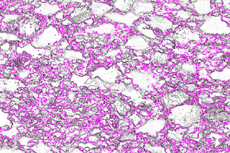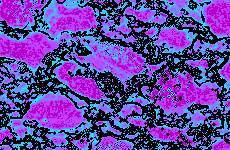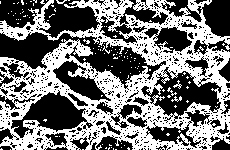3.9
VISUALIZING ORIENTATIONS
top / contents / section3/ pages -- 3.1 -- 3.2 -- 3.3 -- 3.4 -- 3.5 -- 3.6 -- 3.7 -- 3.8 -- 3.9
Analysis of orientation gradient images
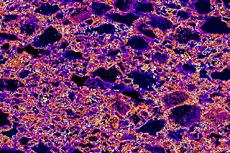
The orientation gradient image (see section 2.10) is a monochrome image and can be colour-coded by any suitable 1-D LUTs (as for example Fire 2 of NIH Image). Using NIH Image (or Scion Image) and the Lazy LUT macro (key E: "EDG2 & EDG4 -> histo", see appendix 2) twice, the orientation gradient image is pre-processed (angles > 90° converted to <90°)
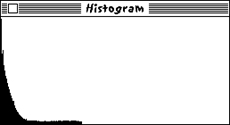
Applying key K: "Contrast low edges", and chosing 45°, edges > 45° are rendered a tasteful lilac, angles between 0° and 45° are contrast-enhanced.
Using key U:"Colour edges", and a suitable range of angles (here 2°-12°), that interval is colour-coded, grading from purple (min.angle) to cyan (max.angle).
Thresholding the orientation gradient image at a low value such as would be considered compatible with orientation variation within one grain, contiguous regions of constant c-axis orientation, i.e., orientationally coherent grains are detected.
Left, from top to bottom:
- colour-coded orientation gradient image (LUT=Fire2)
- orientation gradient image, angles <45° enhanced, angles >45° lilac
- orientation gradient image, range 2°-10° enhanced
- orientation gradient image, values < 12° black
